In 2021, Jake Braver explained the visual effects work on The Strand. He is back today to tell us about his new collaboration with director Scott Cooper on his new film The Pale Blue Eye.
Catherine Farrell is working in production for over 10 years. She has worked on a number of films including Hail, Caesar!, Hostiles, The Ballad of Buster Scruggs and The Tragedy of Macbeth.
How was this new collaboration with Director Scott Cooper?
Jake Braver (JB): Scott is really fantastic to work with. He really trusts his core team and gives you the tools to achieve the things the movie needs. Scott and I are aligned on the principle that in a movie like this the trick is to work on a level that nothing created with visual effects is less authentic than what was actually captured on set.
Did he change his approach to visual effects after his film Hostiles?
JB: I think Scott would be ok with me saying that when we made Hostiles he had a healthy skepticism of visual effects. This was only because he hadn’t really been exposed to visual effects and Hostiles was his first film with a decent amount of effects work. Right from the start The Pale Blue Eye required a larger scope and a need for a wider variety of effects— so it was an entirely different conversation.
Catherine Farrell (CF): I’ll also add what Jake would never say, which is Scott feels so much more comfortable with VFX this time around because he sees Jake as a creative collaborator and he trusts him implicitly. Now that they’ve been through other projects together, I think Scott allows himself to trust the VFX process more because he knows Jake has his back.
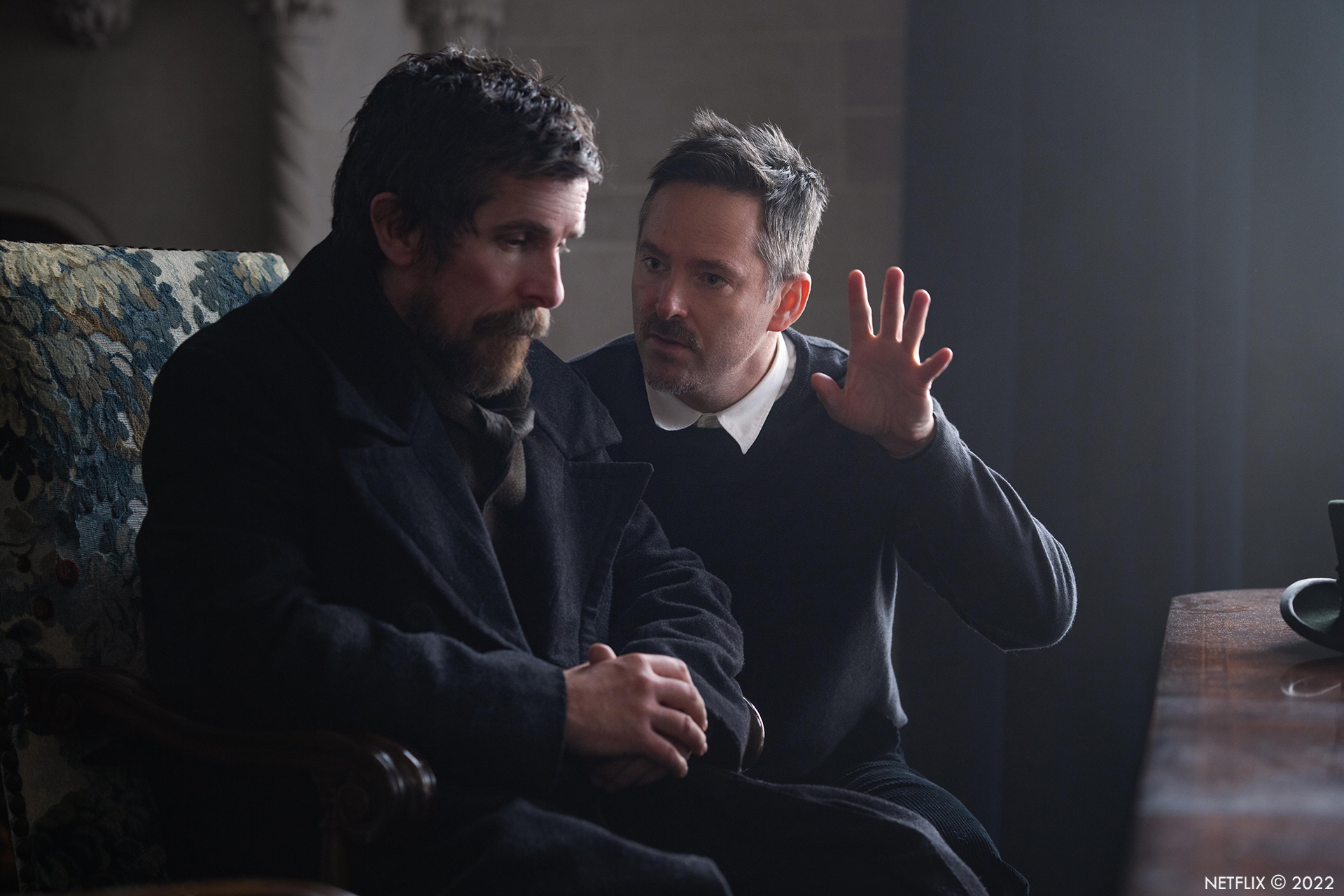
How did you organize the work with your VFX Producer?
CF: Jake and I have worked together on a number of films over the years but never formally as VFX Supervisor & Producer so it was nice to be officially partnered from the beginning. Jake was on the ground in Pittsburgh from prep through the shoot while I was back in New York. During that time there was so much changing on a day-to-day basis with massive VFX implications, that this phase felt more like triage. We were very grateful to finally settle into the more normal routines of post production.
How did you choose the vendors and split the work amongst them?
CF: We reached out to the vendors who we like or worked with before and started putting the pieces together based on who had availability and who could do which sequences with the best team. Some vendors, like Cadence Effects, we had never worked with before but had heard good things and they were a lovely surprise and great partners.
ILM – Hudson River, the Hudson River cliff environments and all they entailed, and a few miscellaneous bits
Phosphene – West Point Campus, anything relating to the campus and Pepe’s Cottage.
Cadence Effects – Snow, snow and more snow. Lots of other assorted shots.
MPC – Some really tough shots that needed snow and fog added, as well as other complex environmental needs.
Pixomondo – Ice House fire sequence.
Studio 8 and Lola – Did what they do!
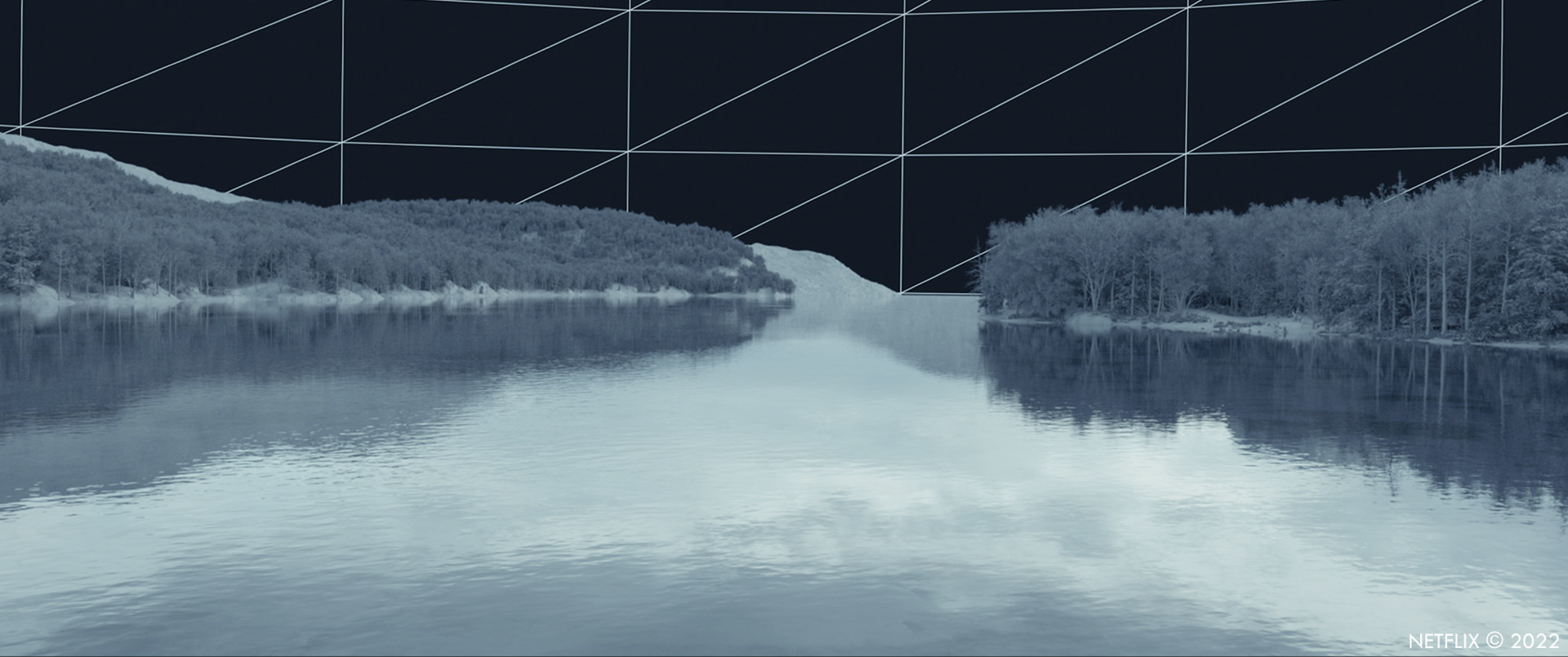
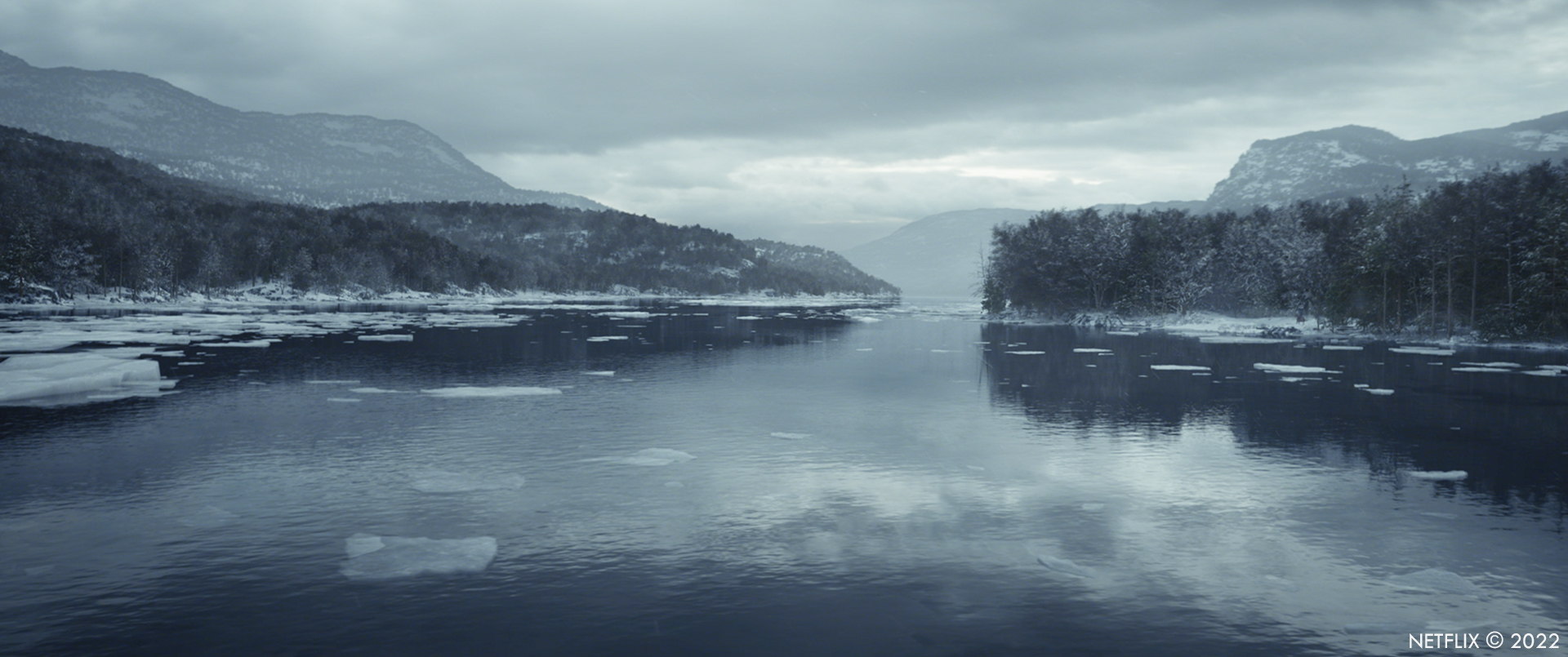
How was the collaboration with VFX Supervisors?
JB: I’d been lucky enough to work with most of them before so it was rather fantastic. The shorthand we had was very valuable and allowed for some very fast answers to production questions. I’d also say as the scope of the West Point shots changed during the shoot, I was in constant contact with John Bair & Vance Miller of Phosphene who were taking the lead on that large build concurrent to our shoot.
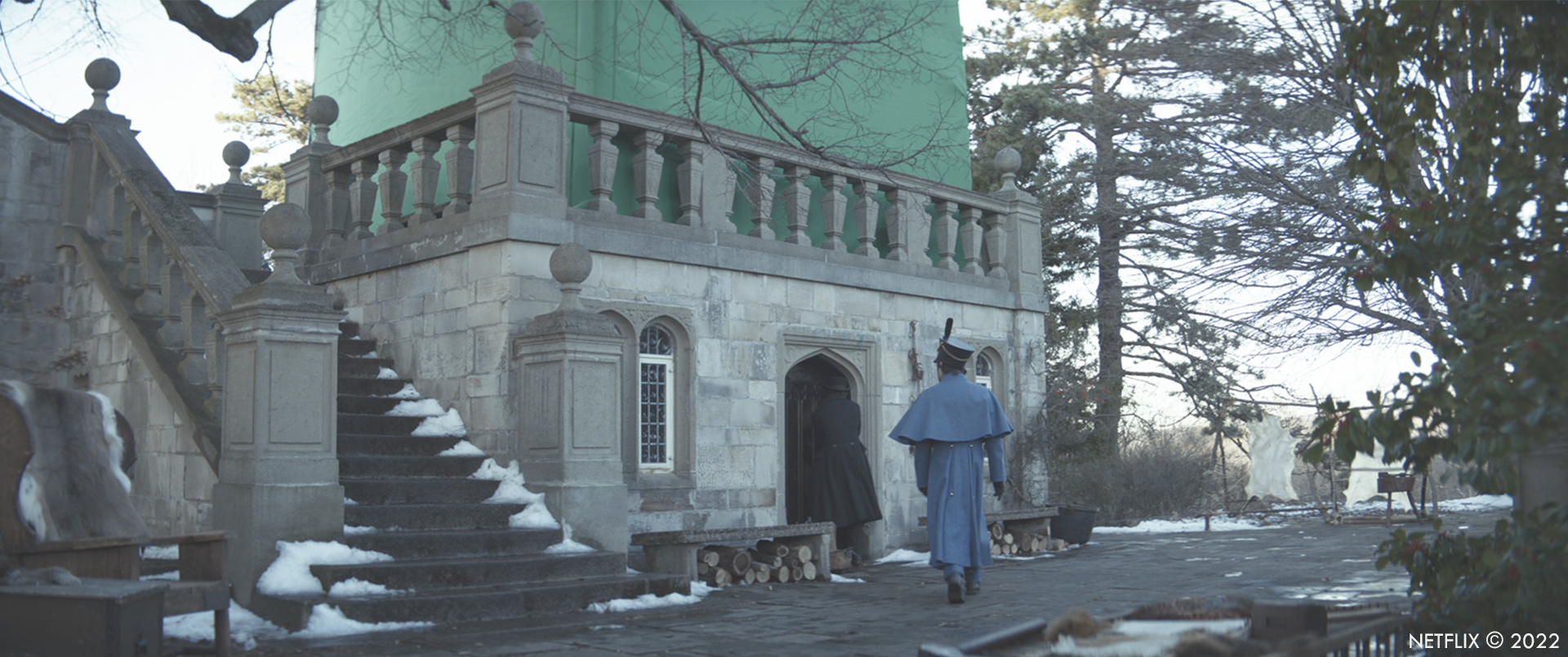
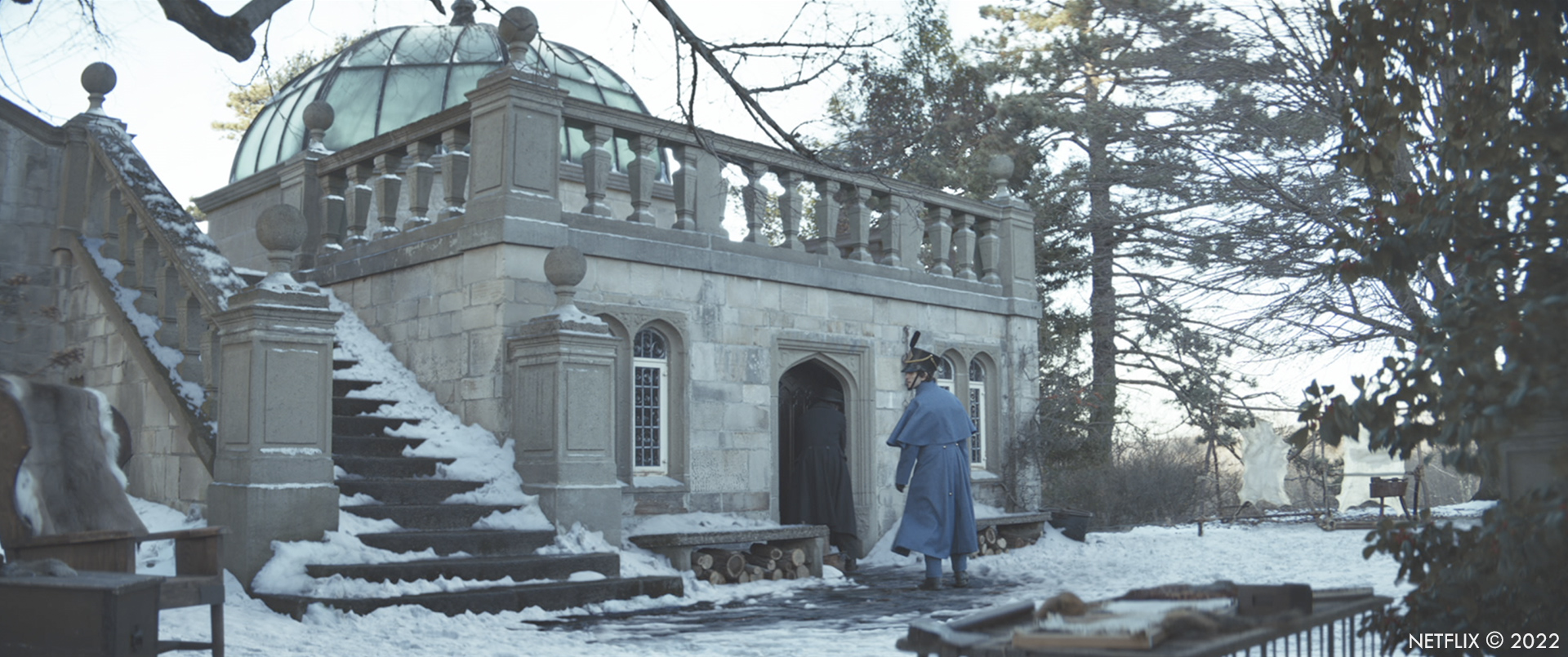
Can you elaborate about the design and creation of West Point in 1830?
JB: West Point was created hand in hand with production designer Stefania Cella, who is fantastic. We knew were going to combine a few different locations to form the campus— it ended up being 5 exterior locations. It was very fun to be unabashedly gothic with the design and implementation.
It was a large-scale CG environment of the campus and surrounds, built from a combination of Lidar, geological survey data, and our on-set reference photography. The few modern structures were replaced with period accurate buildings, and modern features such as aluminum flashing were removed. Details also included models of each prominent tree around the campus quad, using lidar for the base of each tree, photogrammetry for large branches, and a mix of reference photography and procedural techniques for twigs, for a precise match to the practical filming location since we were often cutting directly between shots in different locations.
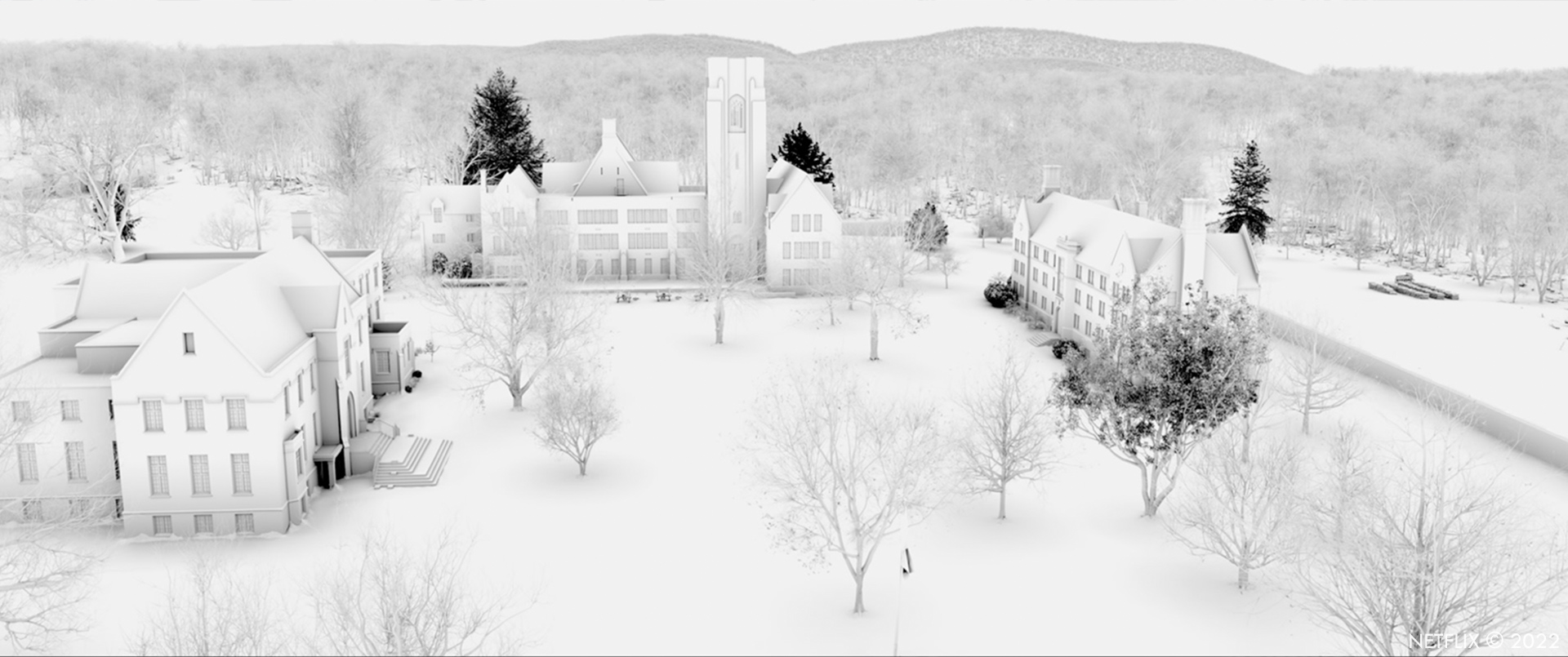
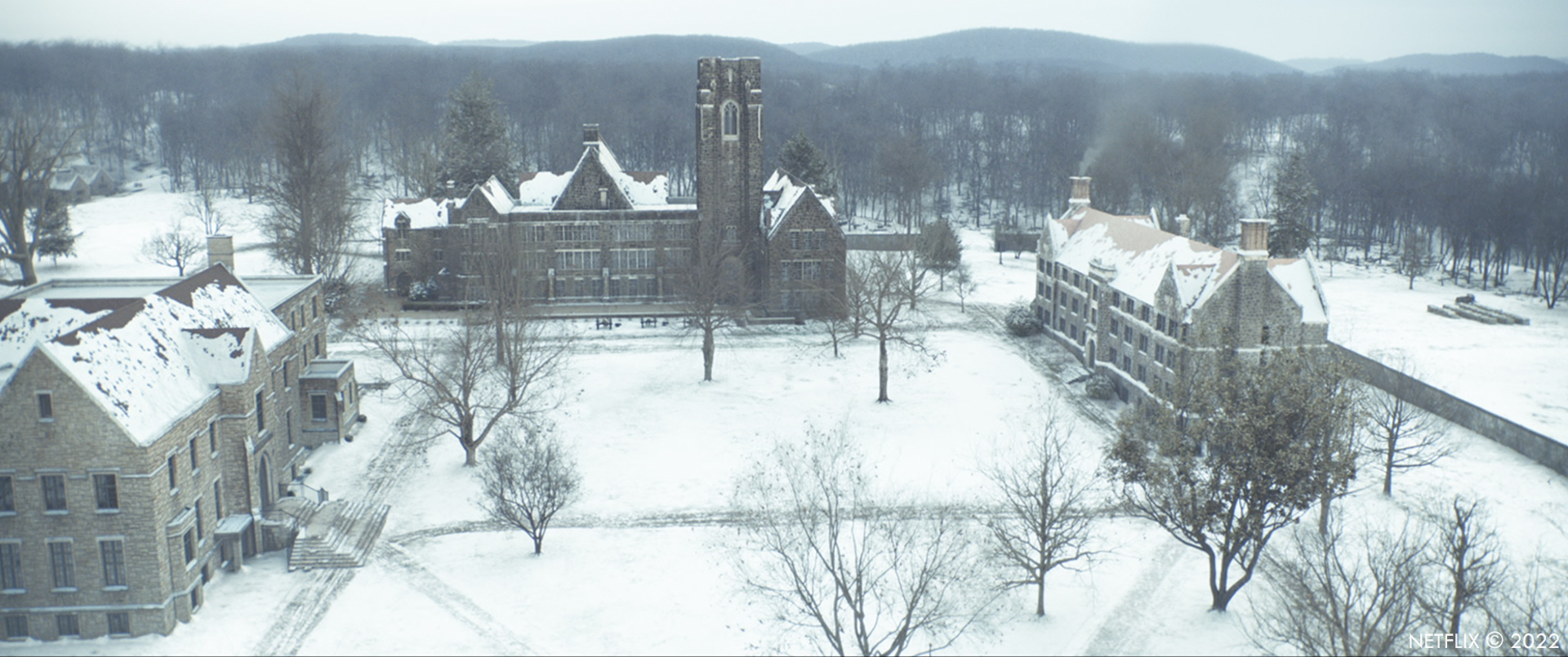
Where was filmed the exterior scenes?
JB: Various locations around Pennsylvania, including in Ligonier which I actually know quite well from shooting parts of Foxcatcher there 10 years ago.
The movie is set during the winter. Did you need to enhance this aspect?
CF: There were a few times during the shoot (count um…two!) that we were blessed with snow on the ground when we wanted it. We added and heavily augmented most of the snow in the movie, both falling and on the ground.
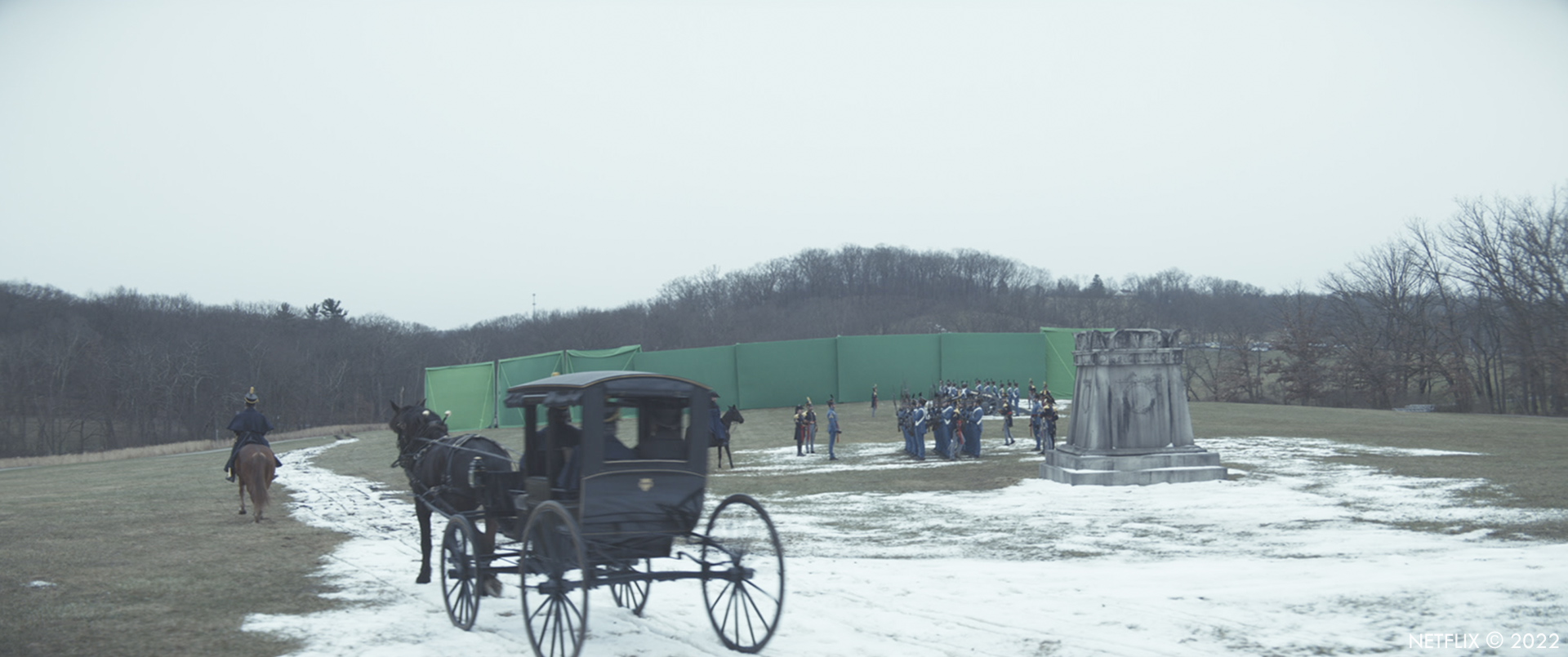
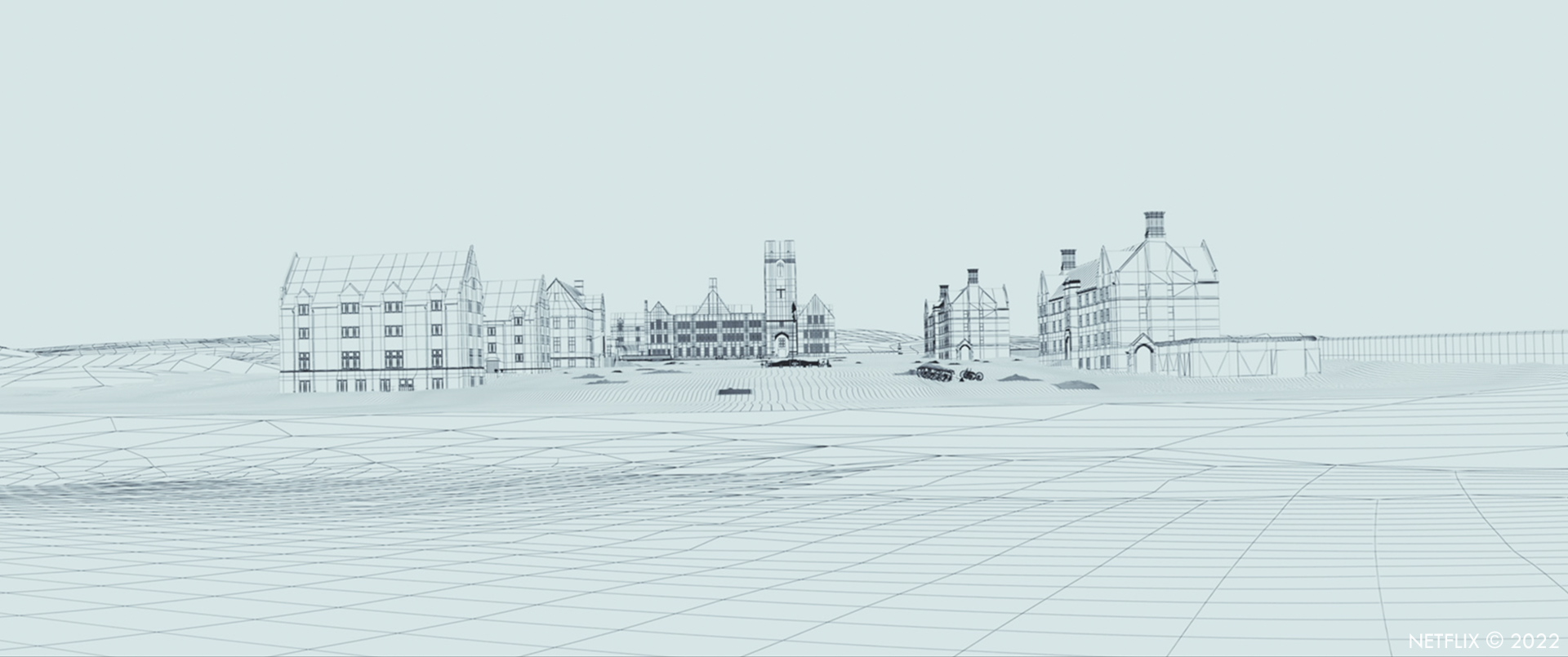
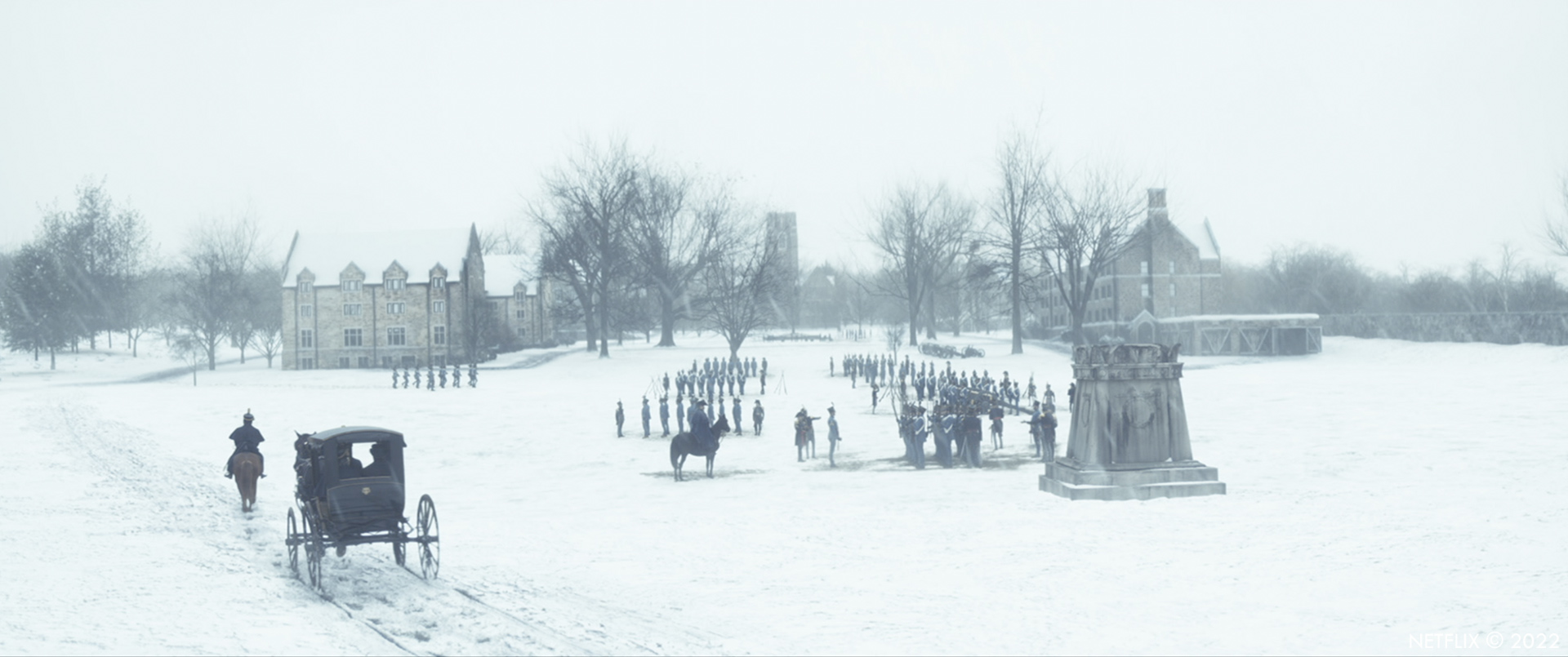
What was the most challenging snow shots?
CF: This was the biggest hit to the budget and schedule since it was the largest variable going into shooting. We had quite a few meetings in prep about “what if it snows day X”, then funny enough after all that planning we got dumped on day one, sealing our fate. Weather continuity shots are not the sexiest, but on a movie with so many exteriors most of our vendors dealt with some kind of snow/weather work.
JB: Due to a number of factors including some unseasonable temperatures, we really limited the practical snow dressing to the areas where actors and horses interacted with the ground. I think every vendor on the movie ended up touching snow, be it ground snow, falling snow or melting snow using a mix of CG and projected DMPs.
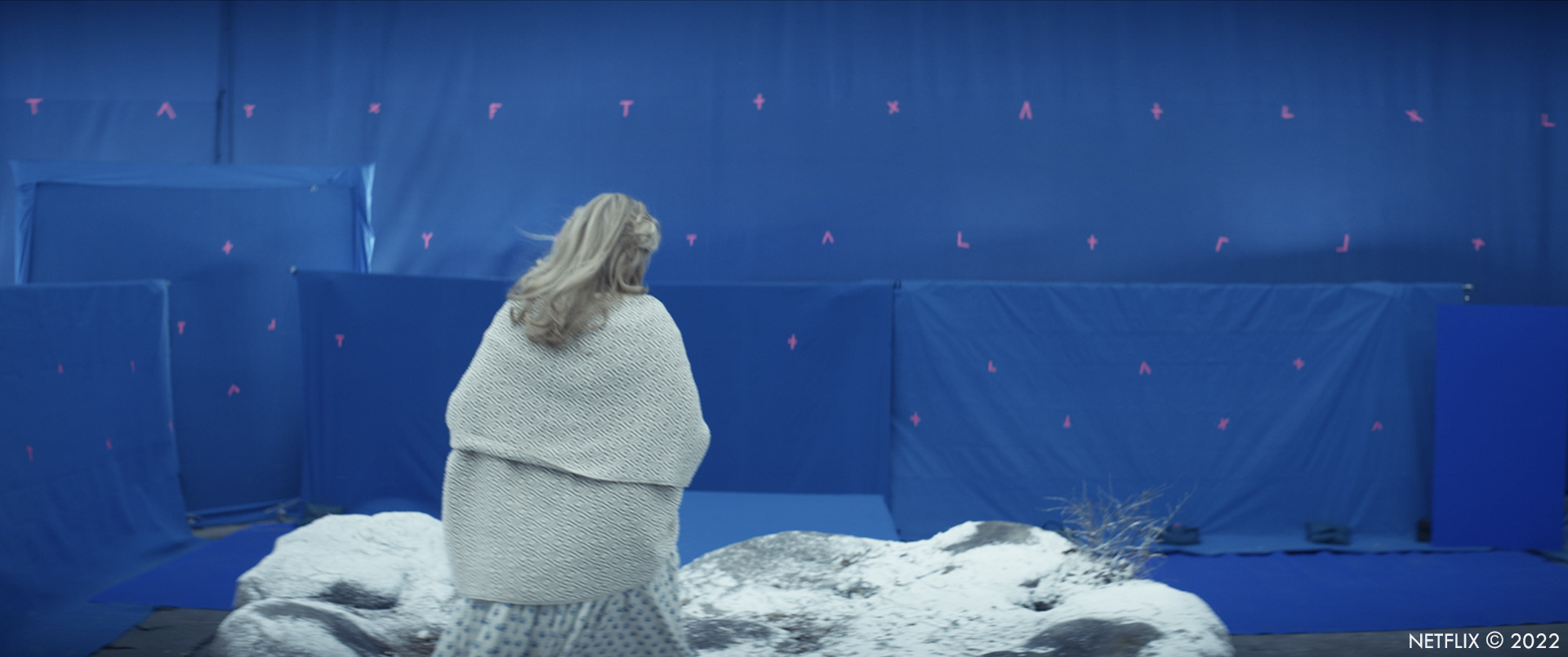
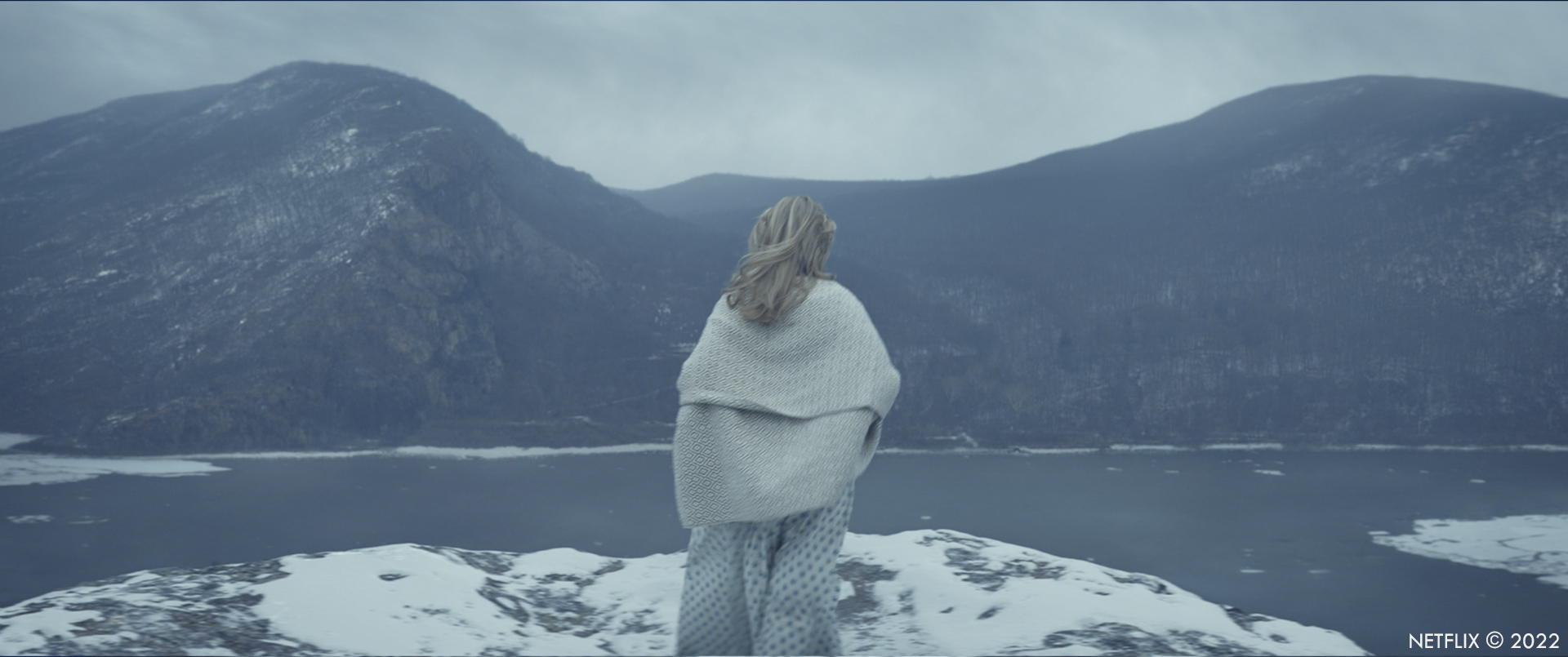
An important sequence takes place on a cliff. Can you tell us more about this massive environment?
JB: Scott was always really sure that he wanted the scenes on the cliff to be an overcast day, with snow and fog— very atmospheric. That said, it was all supposed to be practical. We found a location in Pennsylvania with a really lovely view and we were discussing minimal effects— that is, until we went to scout it again just before shooting. When we arrived it was probably in the worst conditions possible for us— next to zero visibility, and the rock was covered in ice. To shoot there would have been a massive undertaking and so complex it would have been hard to have the very important character moments the scenes needed. So, we built the cliff on stage in Pittsburgh.
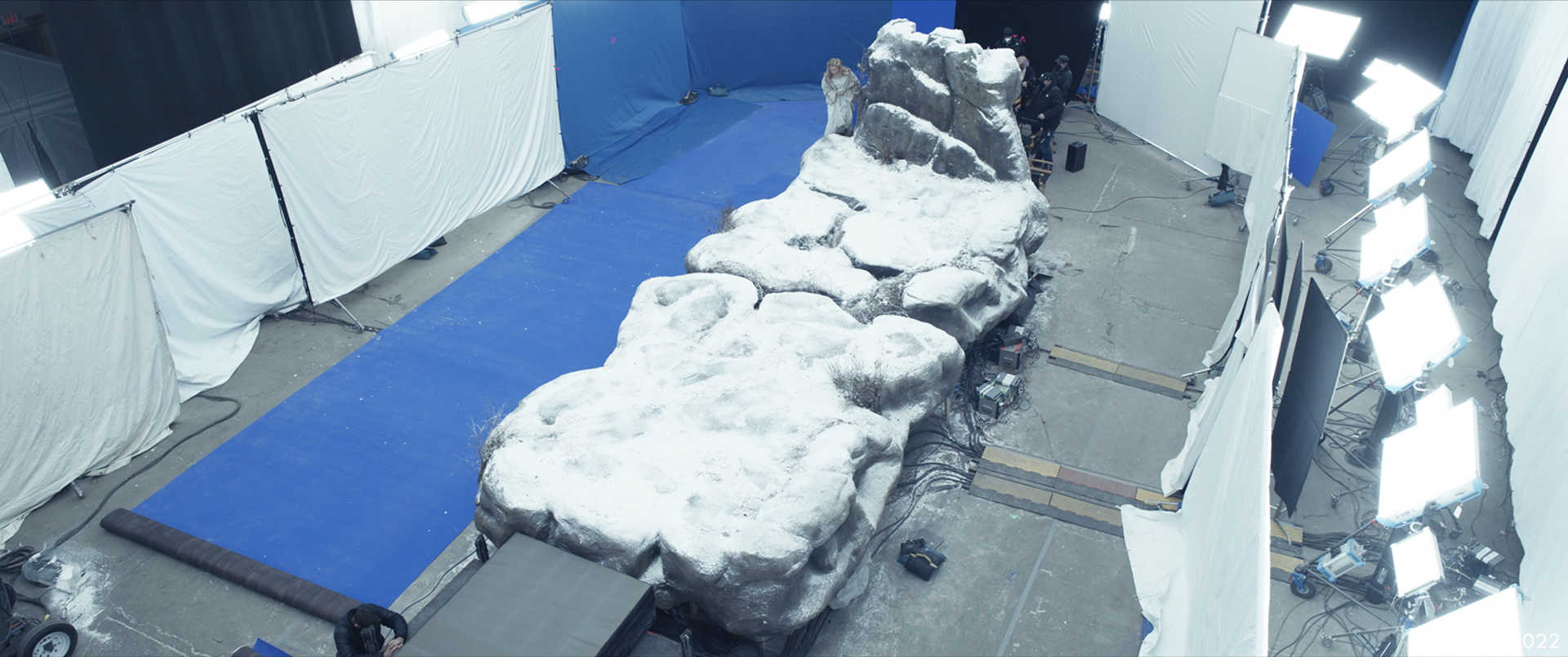
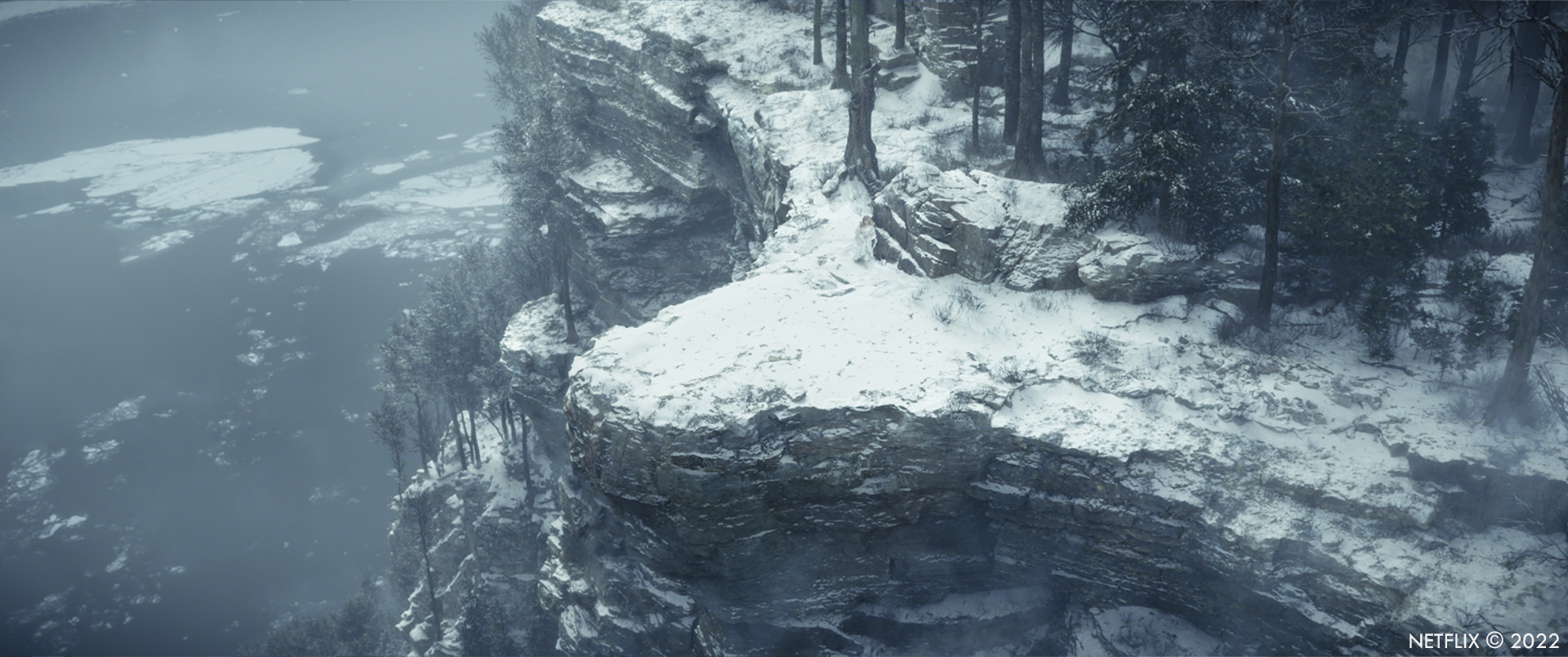
CF: I think this was a classic case of Scott trusting Jake to make it work since the pivot from shooting practically to shooting on a set happened very quickly during production. While we once discussed filming this scene on a stage as an option, we didn’t have a ton of look dev or concept art standing by to reassure Scott. It was a real leap of faith (pun intended!) and ILM came though with some exceptionally stunning work.
JB: The environment was a combination of CG and plates. The tree side of the cliff and the rock itself is a full CG build. For the water side, I shot plates on the side of a mountain in the Hudson Valley 7 miles from the real West Point. On the first call discussing this work with the wonderful Scott Pritchard, who supervised for ILM, we spoke almost only about the mood and the light and shared some references. Once we found our plate location we really got into the design of the environment as the cliff didn’t exist at the Hudson River location. We were lucky to shoot plates right before a snow storm hit so we had great overcast light.
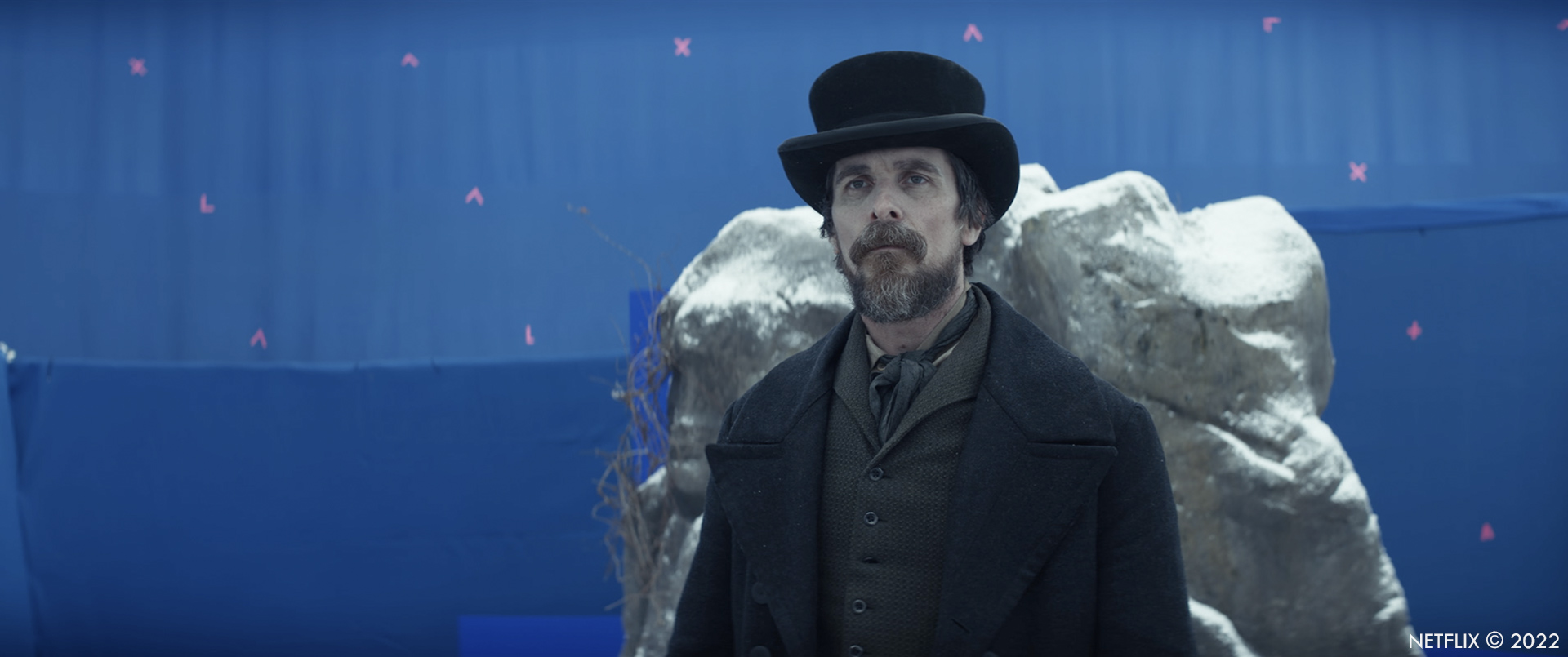
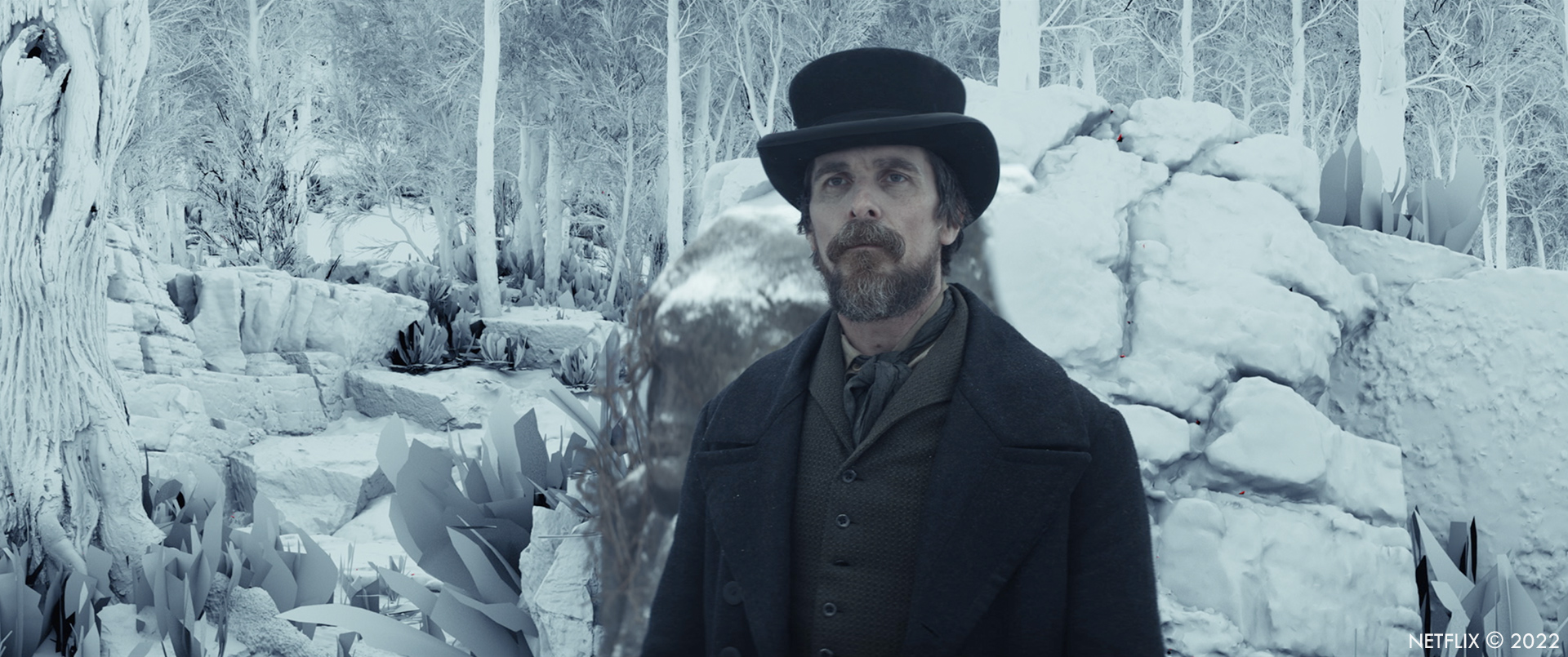
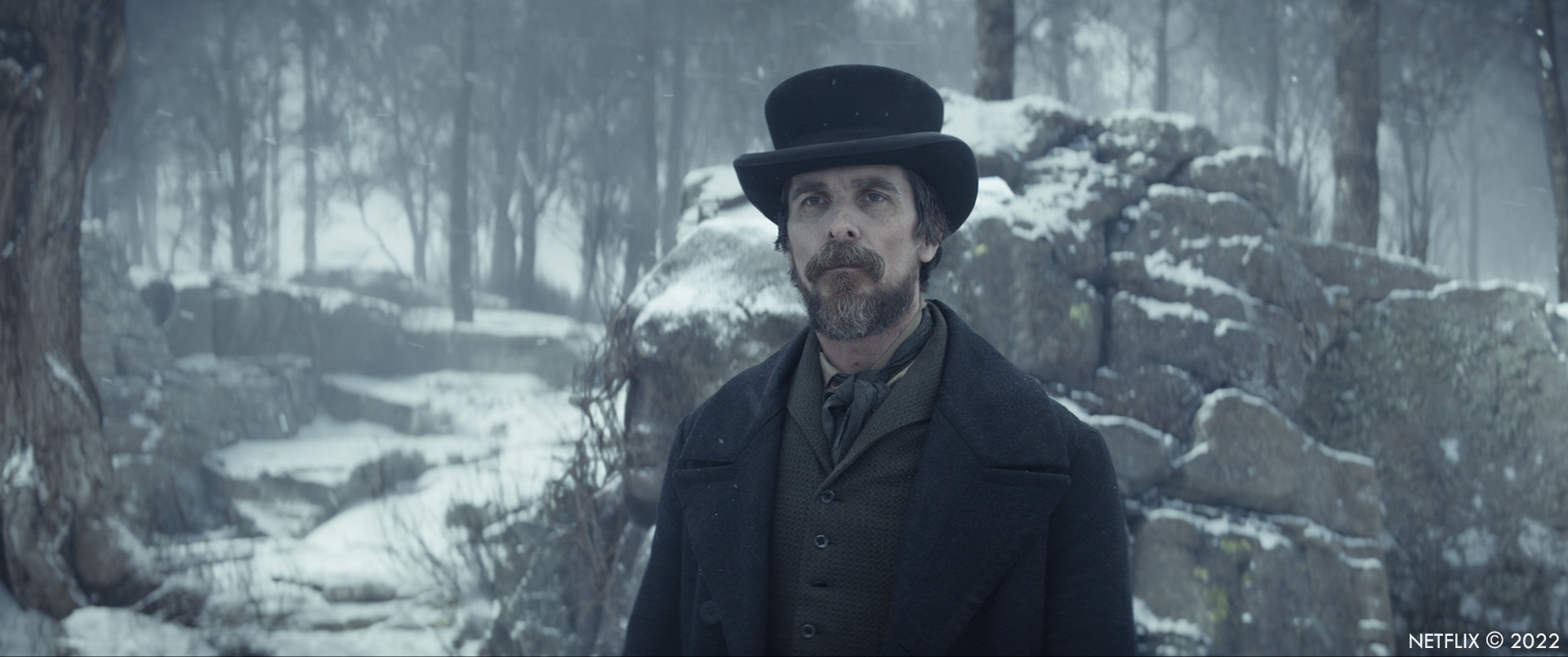
Which location was the most complicated to create?
JB: I would say West Point only because it was a bit of a puzzle from the get go. As we scouted and found more locations Stefania, DP Masanobu Takayanagi and I were always looking for ways to tie all these places together. It’s not really a movie that screams for full CG shots, so we were careful about getting the details of the fully CG West Point shots right so they went unnoticed and blended in.
Can you tell us more about your work on the fire sequence?
JB: Since the scene was so crucial and emotional, I wanted to find a way to shoot it that gave the actors what they needed with minimal disruption from practical effects & safety concerns. Also there needed to be enough interactive light. We ended up using flame bars on set for reference— but all of the fire, smoke, and debris was added using a combination of CG and filmed elements. This allowed for 98% of the shots in the scene to be the actor and not a stunt double.
How did you work with the SFX and stunt teams?
CF: SFX created a number of gags that were really important. The most featured one is what we called the Y Beam, shooting through the ceiling narrowly missing Mrs. Marquis.
JB: We also shot lots of fire elements and I think our SPFX Supervisor felt like a kid in a candy store for those days.
CF: Honestly I think Jake felt that way too.
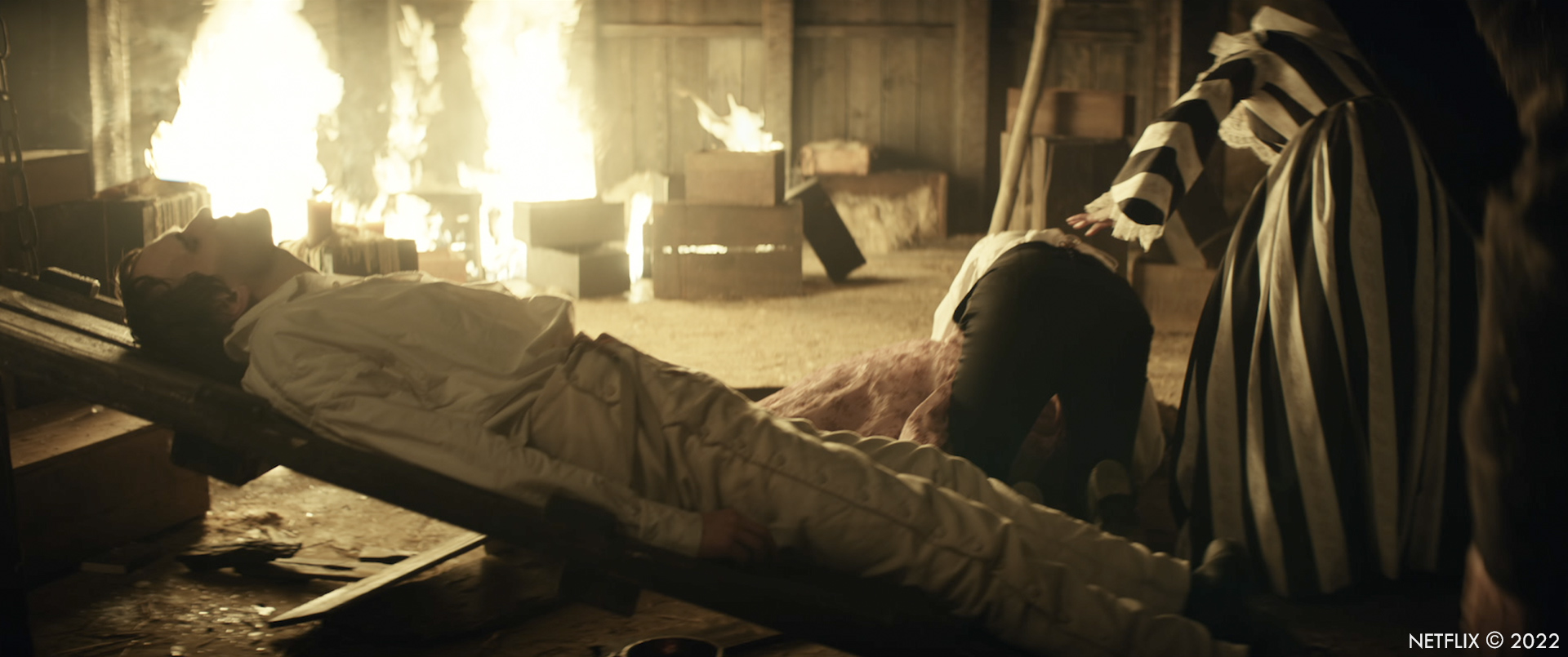
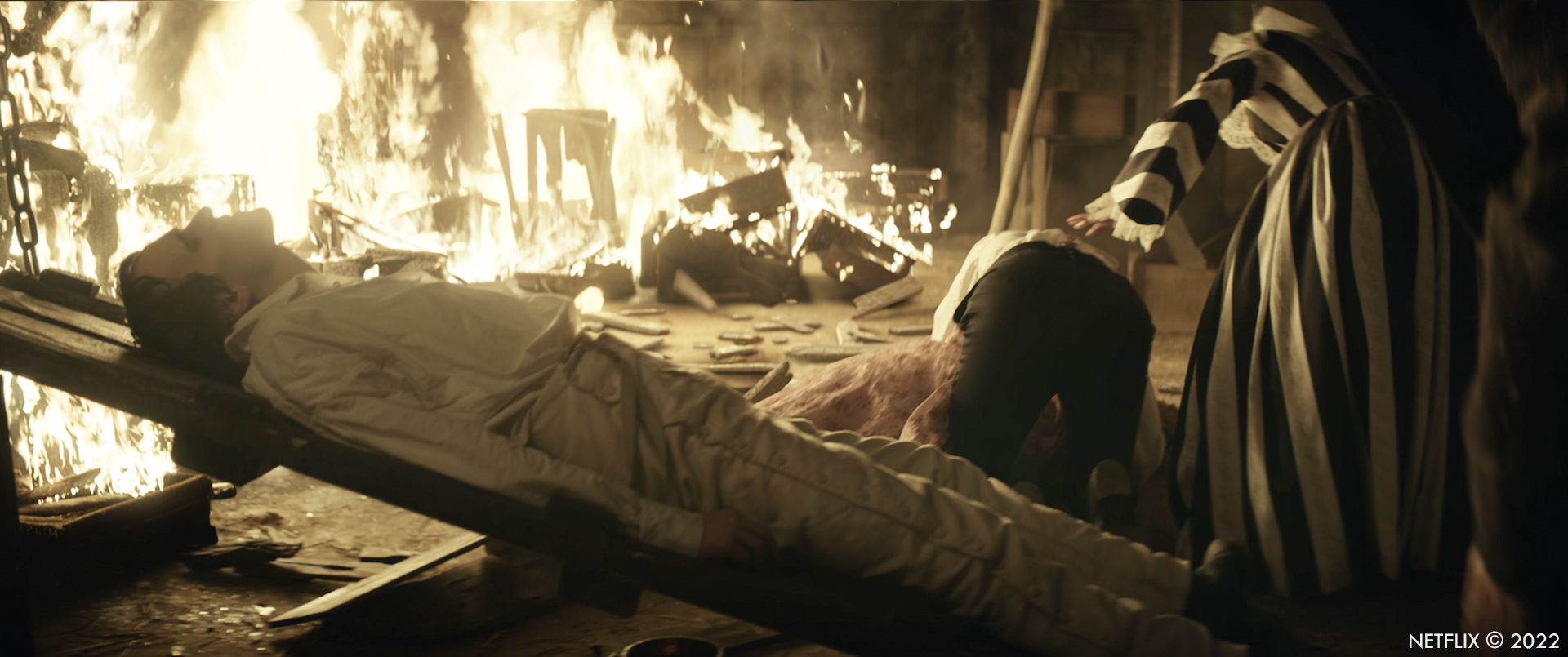
Which stunt was the most complicate to enhance?
JB: Really none of the stunts, the stunt team was top notch.
Did you want to reveal to us any other invisible effects?
JB: A couple of things come to mind, but I think its funny that when Landor first walks through the icehouse, the real ice blocks didn’t read like real ice. So MPC ended up replacing all the ice in the casks with CG ice so we could get more glint & glisten.
Which sequence or shot was the most challenging?
JB: I would say the Icehouse. Scott, Masa and I spent a lot of time looking at fire references we liked. I think the hardest part of that sequence was getting the right amount of exposure detail in the fire. Which is to say, not that much detail and the fire had to vary a lot shot to shot to show the progression of the fire growing larger, while maintaining different characteristics. Adding to this challenge the reference propane fire bars on set burnt one way, but the elements shoot used a different accelerant so we had find a way to marry the two looks.
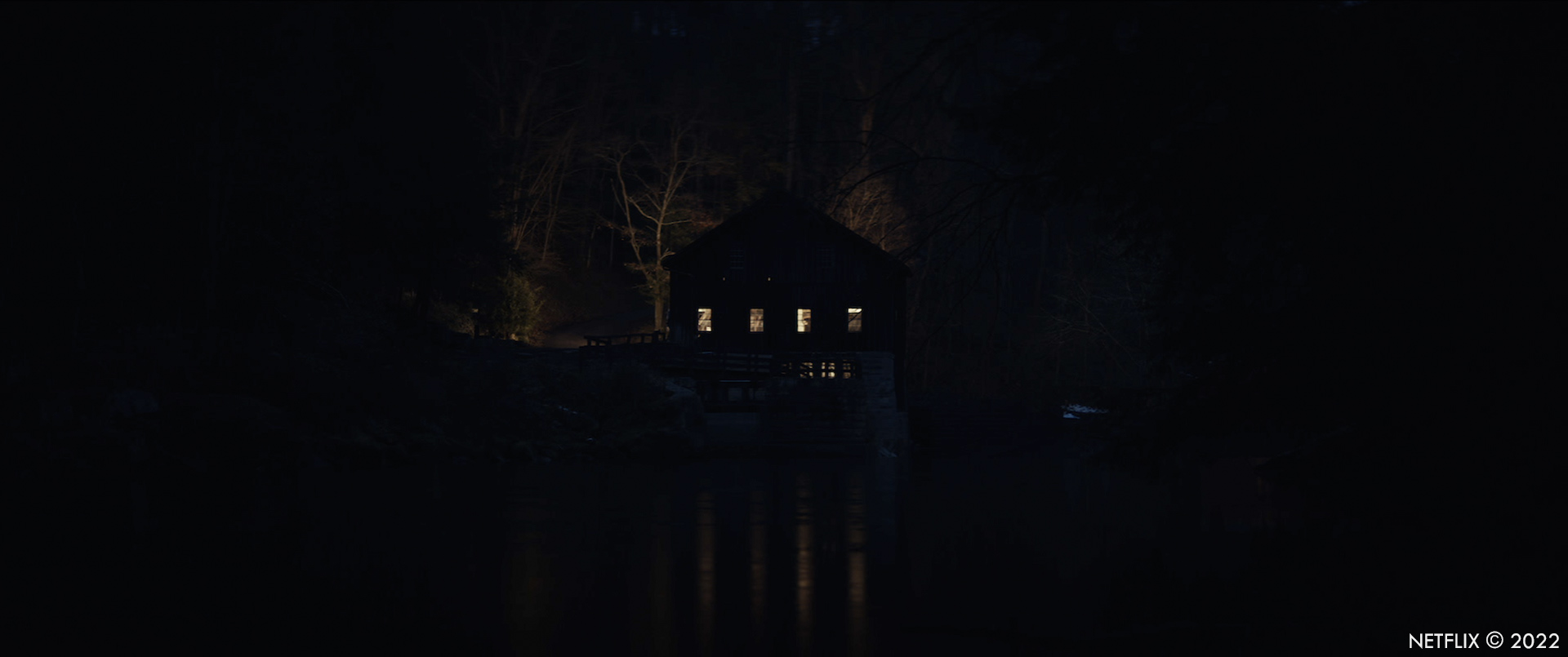
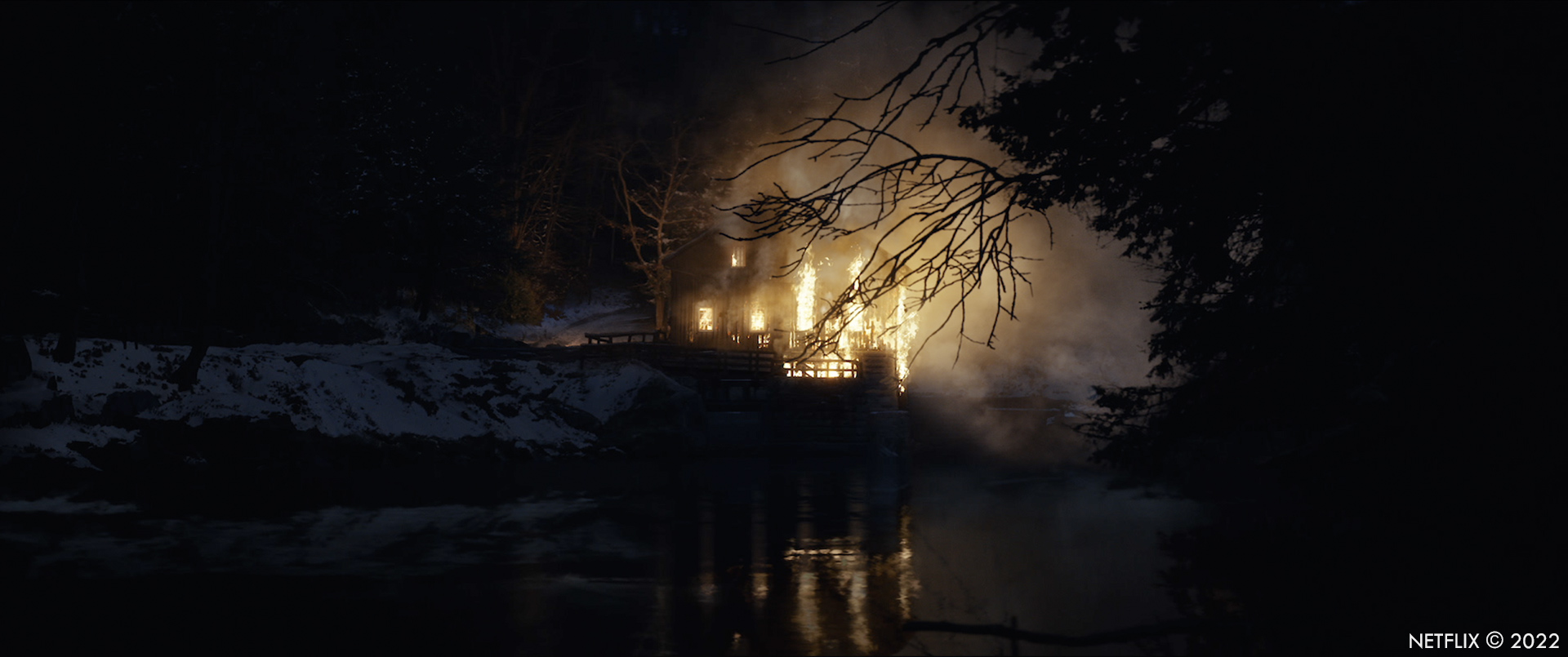
Is there something specific that gives you some really short nights?
CF & JB: An aggressive schedule!
What is your favorite shot or sequence?
JB: I’m pretty happy with the way everything turned out —but the one that comes to mind for me is actually the last shot of the movie. ILM did a gorgeous job with not just the environment, but the CG ribbon and falling snow.
CF: The exterior of the burning icehouse was always a winner in dailies.
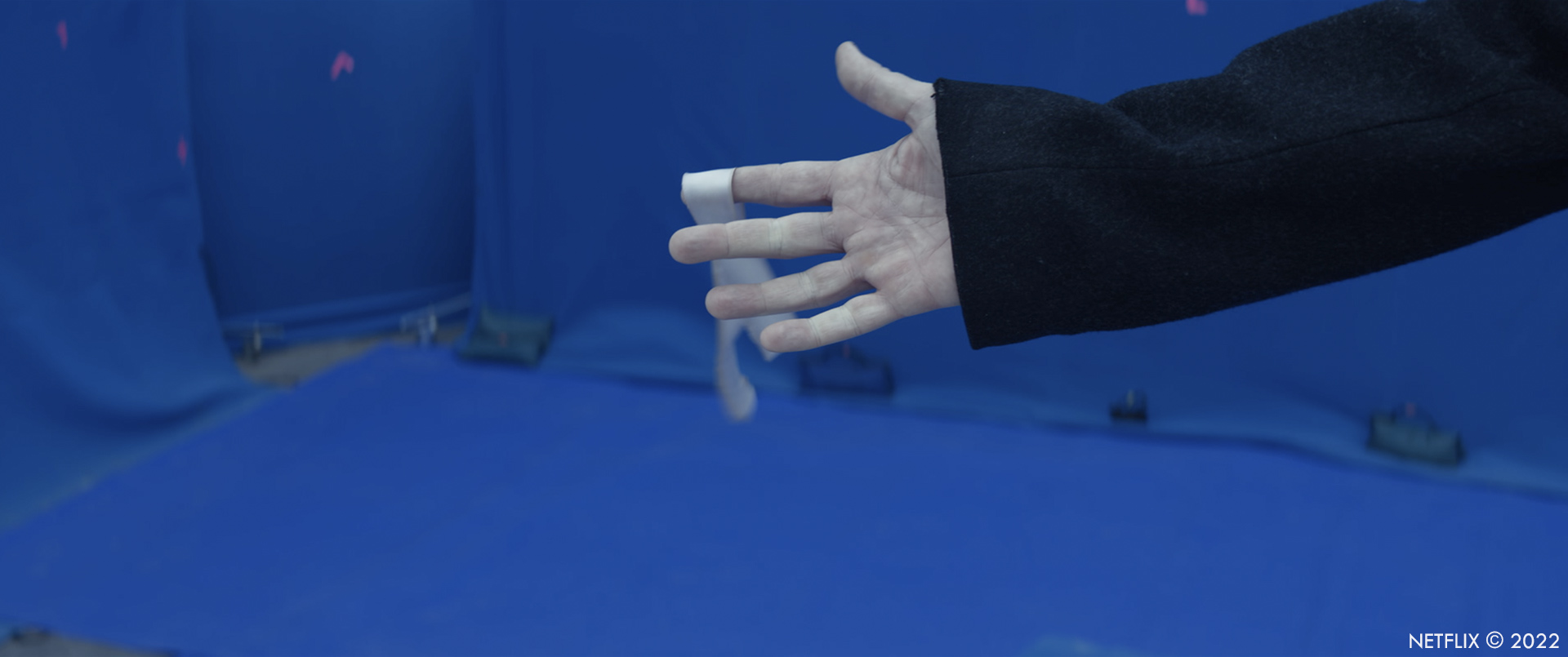
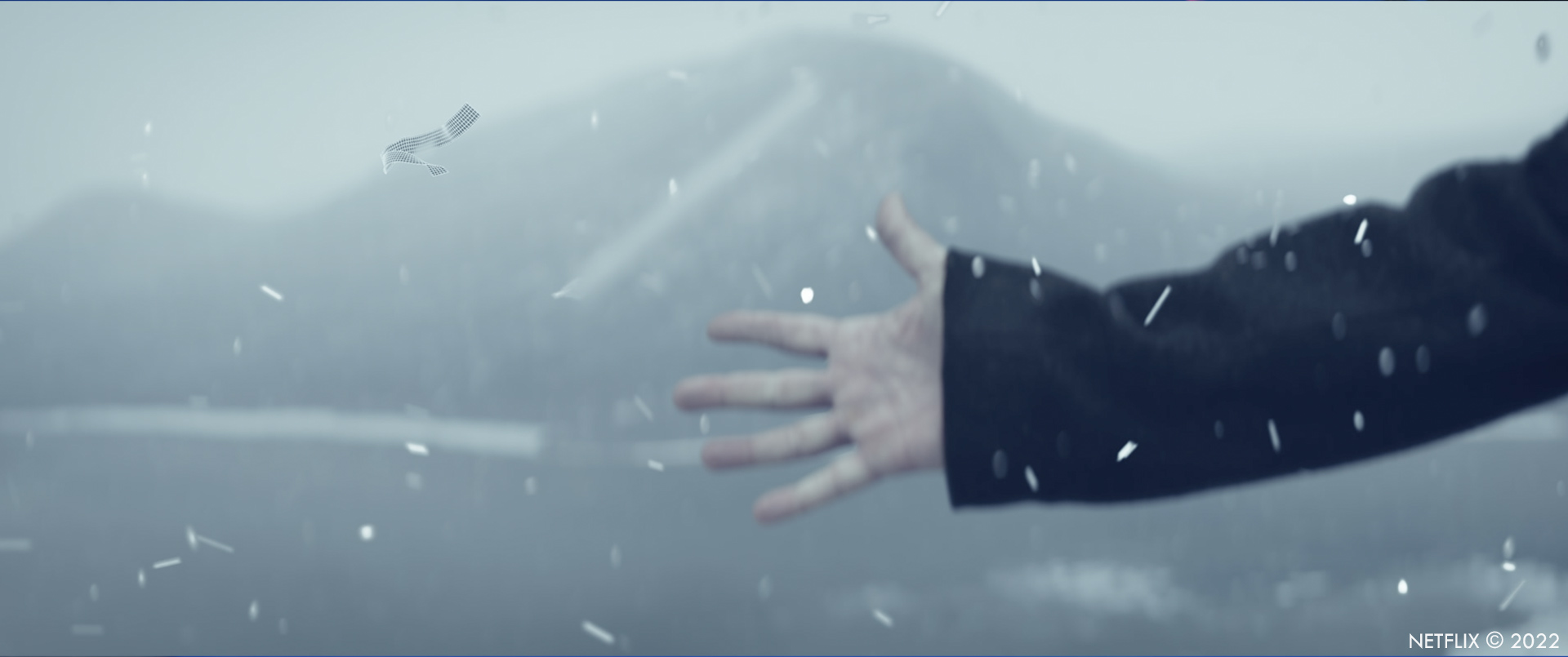
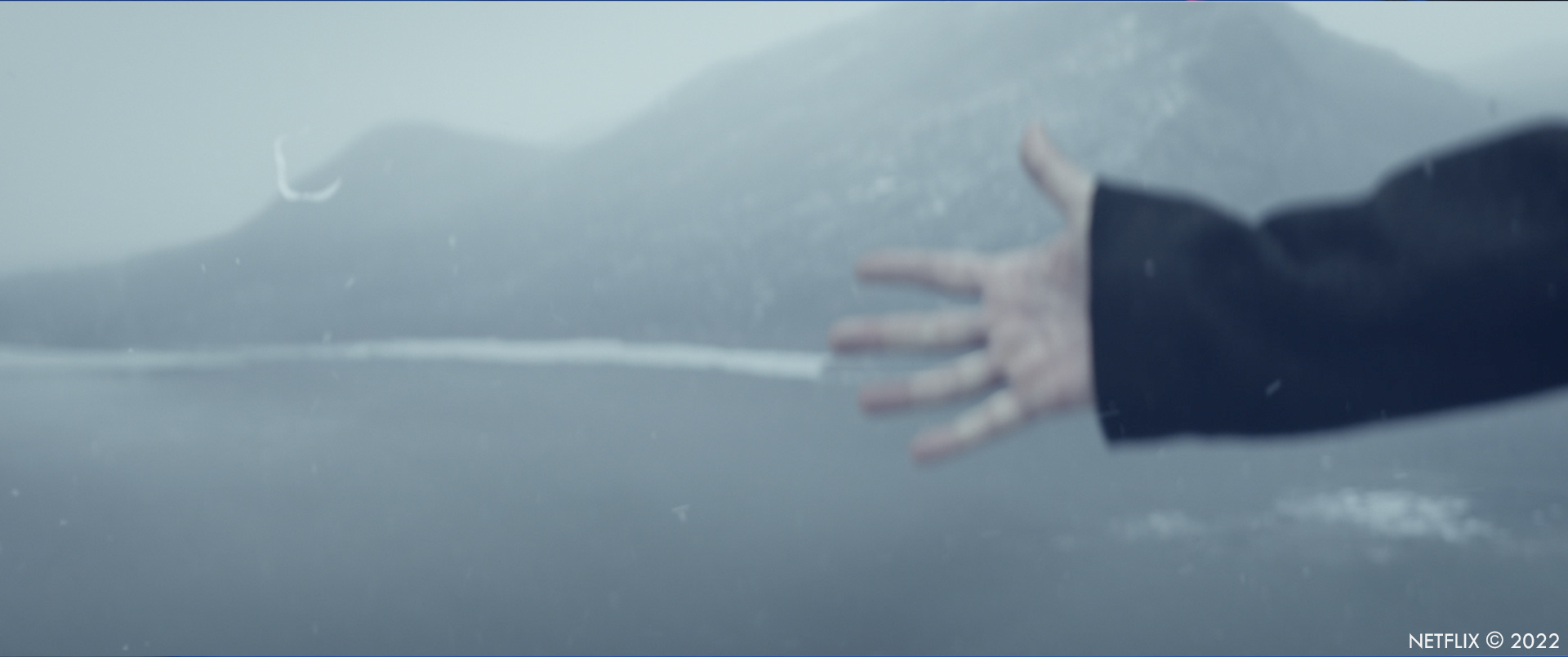
What is your best memory on this show?
JB: For some reason (I’m still not sure why) — after shooting the movie in the dead of winter in Pennsylvania– we did our additional photography in New Orleans over the summer. It was a lot of fun, partly because we weren’t grabbing any big pieces so it was low pressure, and partly because it got Scott, Editor Dylan Tichenor, Catherine and I out of the office.
How long have you worked on this show?
JB: I think Scott sent me the script in February of 2021, but we didn’t start prep until October. So on and off since then—I’d say about a year.
CF: About the same for me.
A big thanks for your time.
WANT TO KNOW MORE?
ILM: Dedicated page about The Pale Blue Eye on ILM website.
Netflix: You can watch now The Pale Blue Eye on Netflix.
© Vincent Frei – The Art of VFX – 2023






